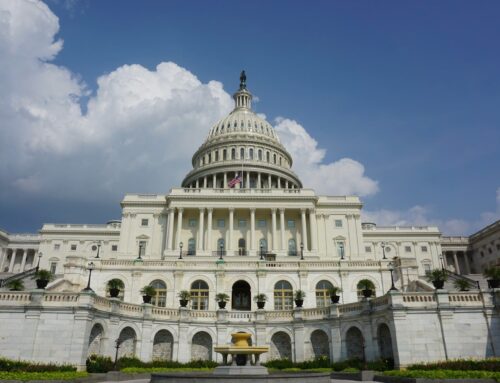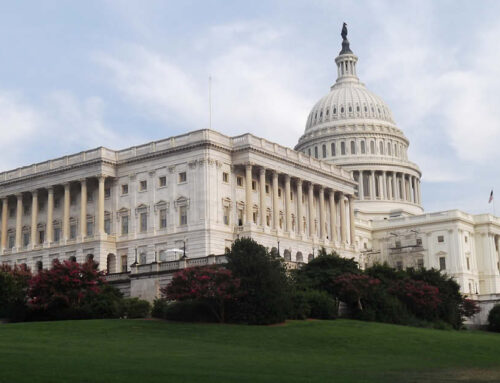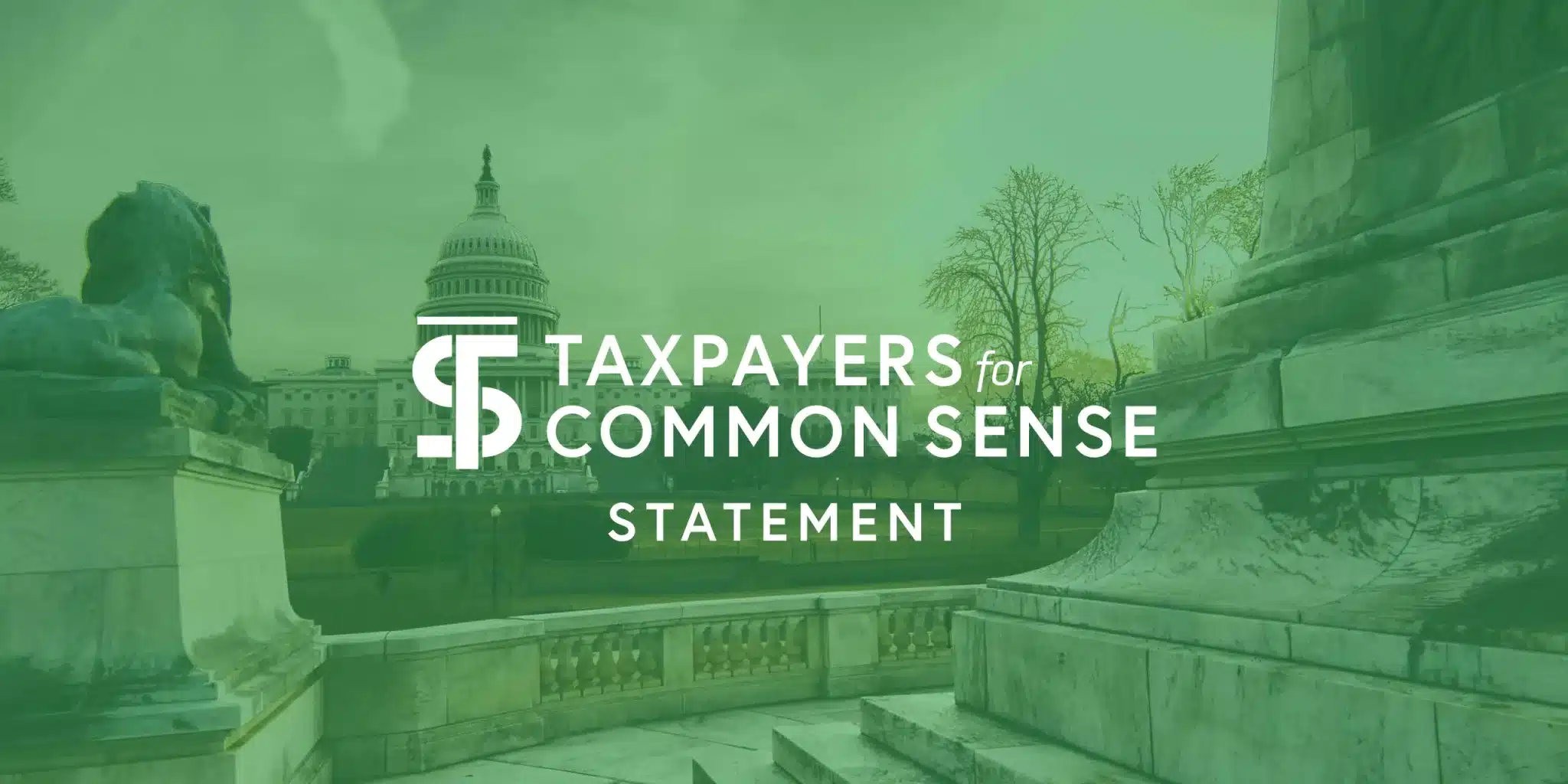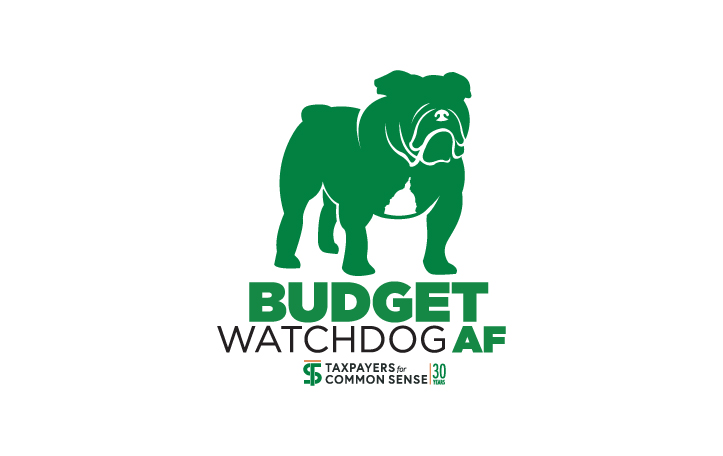In this episode of Budget Watchdog All Federal, host Steve Ellis and TCS Director of Research and Policy Josh Sewell expose the deceptive budgeting tactics being employed in Washington and how this accounting gimmick allows lawmakers to pretend that extending expiring tax cuts costs nothing while actually adding trillions to the national debt.
Transcript
Announcer:
Welcome to Budget Watchdog All Federal, the podcast dedicated to making sense of the budget spending and tax issues facing the nation. Cut through the partisan rhetoric and talking points for the facts about what’s being talked about, bandied about and pushed to Washington, brought to you by taxpayers for common sense. And now the host of Budget Watchdog AF TCS President Steve Ellis.
Steve Ellis:
Welcome to All American Taxpayers Seeking Common Sense. You’ve made it to the right place for 30 years. TCS that’s taxpayers for common Sense, has served as an independent nonpartisan budget watchdog group based in Washington DC We believe in fiscal policy for America that is based on facts. We believe in transparency and accountability because no matter where you are in the political spectrum, no one wants to see their tax dollars wasted. It’s April 10th, 2025 and the budget battle continues in Washington. This week, TCS sent a letter to House lawmakers urging them to reject the Senate’s version of the FY 2025 budget resolution. Why? Well budget Watchdog AF Faithful because it uses budget gimmicks to hide trillions of dollars in additional debt and ask for virtually no savings. To help us understand what’s going on with the Senate’s smoke and mirrors approach, we have TCS Director of Research and Policy, Josh Sewell. Hey Josh, welcome back to the podcast.
Josh Sewell:
Hey Steve, thanks for letting me come again.
Steve Ellis:
Alright, Josh, in our last episode, we discussed the difference between current law and current policy baselines and how that choice affects deficit projections. Now, the Senate has passed its budget resolution and we’re urging the house to reject it. Can you explain what’s happening here?
Josh Sewell:
Yeah, happy to. So the Senate version of the budget resolution, it uses some call it classic Washington budget gimmicks to really hide the real impacts of its proposals. So the House budget resolution was more transparent about the deficit impact instructing the Ways and Means committee, which is the tax writers in the house, to limit deficit increasing provisions to a mere four and a half trillion dollars while directing up to importantly $2 trillion in spending offsets. One and a half trillion of that was laid out per committee. And then there’s also a pool of $500 billion in additional savings from frankly whoever wants to do it. But the Senate version only acknowledges about one and a half trillion dollars in deficit increases. And they do this while hiding trillions more through a budgetary slide of hand, specifically using what was known as current policy baseline instead of current law baseline.
Steve Ellis:
And for our listeners who might need a refresher, can you explain again why this baseline choice matters so much?
Josh Sewell:
Yeah, absolutely. So as we discussed in last week’s episode, a current law baseline assumes policies expire when they’re scheduled to expire, like how the individual tax cuts from the 2017 Tax Cuts and Jobs Act are set to expire by law at the end of 2025. So under current law, the cost of extending these tax cuts without offsets would be counted as new deficit spending, and it’s about $4.6 trillion worth. However, under a current policy baseline, the Senate assumes that these tax cuts will continue indefinitely making it look like extending them costs. Nothing. It’s like pretending money that won’t come into the treasury just doesn’t matter when you’re calculating the deficit.
Steve Ellis:
So it’s like saying we were never going to collect that money anyway, so we don’t need to count it when we officially decide not to collect it. Or I guess to put it another way for our listeners, if you’ve been paying for a car loan payment every year, that you assume you’re going to keep making that car loan payment even after the loan expires.
Josh Sewell:
Yeah, exactly. And what makes this particularly cynical is that these same tax provisions, which were deliberately designed with an expiration date to make the original 2017 bill appear less costly. So the lawmakers used current law when it helped them pass the original tax cuts because they could not come up with spending offsets to cover the full cost of the bill. And now they want to use current policy when it helps them extend those cuts without acknowledging the full cost because again, they don’t want to make decisions to cover the cost of the bill.
Steve Ellis:
And we pointed this out in our letter to the house yesterday, right?
Josh Sewell:
Yes. In our letter, we specifically call out this maneuver for what? It’s a cynical attempt to obscure the enormous deficit impact, and this approach adds fiscal insult to budgetary injury by hiding trillions in additional debt behind technical assumptions, technical assumptions that are quite big.
Steve Ellis:
Well, speaking of big, let’s talk real numbers here. How much are we talking about in terms of deficit impact?
Josh Sewell:
So the cost of extending the expiring provisions from the GCJA is approximately 4.6 trillion. That’s just to maintain the current policy of what they have. And so the budget at least acknowledged about four and a half trillion dollars in deficit increases. And this is the house budget. While directing some offsets, the Senate version, it only acknowledges one and a half trillion, literally just hiding the rest through this baseline choice. And I got to emphasize that this is serious money. So just for perspective, our national debt has already exploded from about $20 trillion when the TCGA was enacted to more than $36 trillion today. So adding trillions more without acknowledging it, it’s just fiscal malpractice.
Steve Ellis:
And that’s an understatement. And I also think it’s worth reminding our listeners that interest payments on our debt are over a trillion dollars annually. Every additional dollar we borrow means more money going to service that debt instead of funding priorities or reducing the tax burden.
Josh Sewell:
Yeah, that’s right. So this isn’t some abstract accounting issue. Less revenue plus more spending equals higher debt regardless of which baseline you use. This is math and math doesn’t change. It’s only how honest we’re being about it.
Steve Ellis:
Now, Josh, some of the supporters of this approach might argue that using current policy is more realistic since Congress has a history of extending popular tax provisions. What’s your response to that?
Josh Sewell:
So there are certainly cases where current policy assumptions make sense and they’re more conservative, like with everyone’s favorite farm bill programs. That’s because for decades, farm bills have been consistently reauthorized every five or six years. But in this case, we’re talking about provisions deliberately designed with expiration dates as a budget gimmick. So if lawmakers believe these tax provisions should be permanent, which is perfectly valid, if that’s their choice, they should be transparent about the cost of making them permanent and finding ways to offset it. You can’t let them hide baseline manipulations so that they can get what they want without having to make choices. The proper approach is to use current law to honestly account for policy decisions and their full costs,
Steve Ellis:
And it’s simply not true. The current policy always comes to pass as permanent law. When the tax cuts passed under President George W. Bush were about to expire, the Obama administration negotiated with Congress and many of them were altered when they were made permanent to be less expensive. In our letter, we emphasize that taxpayers deserve clarity, not obfuscation when it comes to how their tax dollars are allocated and how legislative choices will affect deficits and debt.
Josh Sewell:
Absolutely. And that’s been TC S’S consistent position for 30 years. We are not saying whether any particular tax policy is good or bad. That’s not to say we don’t have opinions on that, but in this particular instance we’re saying that lawmakers should be honest about the cost of their policy choices, whatever they are, and not use budget gimmicks to hide the ball from taxpayers.
Steve Ellis:
So going back a little bit, Josh, you mentioned that the Senate had one and a half trillion dollars in their instructions to the finance committee, the Tax Writing Committee in the Senate for deficit increases. What’s in that?
Josh Sewell:
So since they don’t have to pay for extending current policy, they get to get a grab bag of whatever they want in many respects. And so it’s been telegraphed that most of this is going to be centered on things that the president has promised in his reelection. So it could be that they eliminate income tax on tips. It could be the income you get from Social Security, the president said he doesn’t want to tax that. It could be overtime, it could be particular segments of manufacturing. There were a lot of promises that the president made, but it’s clear that this is an attempt to get some of that into the tax code, especially the tax on Tips and social security. And we think that no tax on overtime wages.
Steve Ellis:
So to be clear, the Senate, it’s really, and it’s 4.6 trillion in extending the TCGA tax cuts and one and a half trillion dollars for whatever other tax provisions they want to pass. So you’re really talking about $6 trillion of deficit increases where they’re just trying to squeeze into a one and a half trillion dollars framework.
Josh Sewell:
Absolutely. And it’s based on their assumptions on some of the interest rates and the economic activity that’s going to go forward too. So you would think at least $6 trillion. And
Steve Ellis:
The House built, Josh, we mentioned before that they had $2 trillion in savings. Now one and a half trillion was allocated to seven specific committees that they were supposed to do, and then another 500 billion that was, Hey, if somebody can find the change in the couch cushions that comes up to 500 billion, then let’s do that. Okay. So there’s 2 trillion of savings that is proposed by the house. How much was of savings was in the Senate bill?
Josh Sewell:
Well, the Senate did have some savings requirements. It’s a slightly different floor. It’s a $4 billion billion with the B,
Steve Ellis:
Right?
Josh Sewell:
Yeah. This is not one time where I use the wrong B versus T. It’s only $4 billion, 1 billion from four different committees while committing $6 trillion in increased deficits through the tax changes. It’s astonishing.
Steve Ellis:
It is. It’s $1.996 trillion less than what the house proposed.
Josh Sewell:
But I mean, it is true, but I will channel the Senate right now in the negotiations that they’re having with the house. We promise we’ll do something. We just aren’t going to put it in writing, but we promise we’ll do something. We’ll save you more money somewhere between four and billion and who knows what.
Steve Ellis:
And we know even with the house and their 2 trillion, the budget committee can still wave their magic wand and say, okay, you don’t actually have to come up with all that money and we get that, but at least it’s a target. At least it’s something. At least it’s acknowledging the deficit both on both sides, both on the tax cut side and on the spending side, whereas the Senate is just magic pixie dust.
Josh Sewell:
Yeah, exactly. Okay,
Steve Ellis:
Josh, let’s pivot slightly to talk about how this connects to what we discussed on our last episode about tariffs. The administration has been suggesting that tariff revenue could help offset some of these costs. Has your assessment of that changed?
Josh Sewell:
No, not at all. So as we discussed last time, and the president approved yesterday with his 90 day pause on so-called reciprocal tariffs, again, as we’re recording, maybe it changed. I’m not checking my phone right now. Tariff revenue is just highly unpredictable and cannot be counted on as a reliable offset under any circumstance. So it depends on just too many variables. Consumer behavior, retaliatory measures from other countries and changes in the tariff policies themselves, which again, as we’ve seen, can shift by the day or by the tweet in this instance. Plus there’s another thing is that using tariff revenue as an offset for spending or tax cuts ignores the economic costs of those tariffs and the potential Washington funded bailouts for affected industries. So just remember, a tariff is just another name for an import tax, and that’s one paid by American consumers and businesses.
Steve Ellis:
So the bottom line here is that whether it’s using current policy baseline to hide tax cuts or counting on speculative tariff revenue to offset spending, we’re seeing a lot of budget gimmickry rather than honest fiscal accounting.
Josh Sewell:
Yes. And as TCS has maintained for three decades, taxpayers deserve better. So we deserve transparency and accountability, not smoke and mirrors.
Steve Ellis:
Well, there you have at podcast listeners reject the smoke and mirrors. This is the frequency. Mark it on your dial, subscribe and share and know this taxpayers for common sense as your back America read the bills, monitor the earmarks, and highlight those wasteful programs that poorly spend our money and shift long-term risk to taxpayers. We’ll be back with a new episode soon. I hope you’ll meet us right here to learn.










Get Social